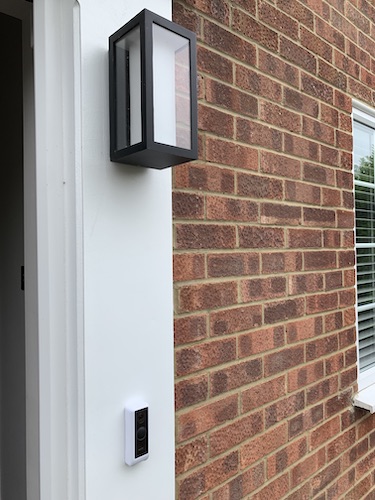Sonos Doorbell
Background
Everyone has a smart doorbell these days, but not everyone has a chime box or actually wants one.
Last year I had my front door replaced and in the process, the door surround was also rebuilt. This gave me the opportunity to add wiring for a permanently wired smart doorbell, previously I had a battery operated dumb doorbell with no wiring available.
Being a Ubiquiti fan boy, I managed to import a G4 Doorbell before they were released in the UK. To power the doorbell I needed a hefty transformer that wouldn’t fit in a chime box.
I ran wiring for the new doorbell and fitted a transformer on the wall in an enclosure near the front door. I opted to skip installing a chime box to keep the internal wall free of too many components. The omission of a chime box led me to use my smart speakers to announce visitors.
Over the years I’ve acquired a few Sonos speakers, in this post I’ll document how I use these in place of a door bell chime.
My Gear
Just to clarify my setup for those following, I’m using:
- Sonos Playbar, Play:1 and Play:3
- Unifi G4 Doorbell
- Home Assistant OS (previously I ran Supervised on Ubuntu) on an Intel NUC
 |
| Unifi G4 Doorbell and Hue Impress outdoor light |
Requirements
I wanted to announce visitors on all speakers within my home using a generic chime sample. However, I have a Playbar so its highly likely that the TV will on when the doorbell is pressed, so I needed to consider how to resume the TV after the chime plays.
In addition to this, it would be nice to retain any current playlists and not have the doorbell ruin the mood.
The rough pseudocode of what I wanted to achieve:
- Doorbell is pressed
- Notification is pushed to all mobile devices
- The state of all media players is stored
- The volume of all media players is set to an appropriate level for the chime
- All media players are grouped
- The chime is broadcast
- The camera image is streamed to my Google Home
- Wait 5s
- Resume all media players
Implementation
The YAML for my automation can be found below. Notice the strange binary_sensor I’m using as a trigger - this comes from the Unifi integration for Home Assistant and is set to on then the doorbell is pressed.
- id: doorbell_fired
alias: Doorbell
trigger:
- platform: state
entity_id: binary_sensor.doorbell_doorbell
to: 'on'
condition: []
action:
- service: notify.notify
data:
message: Someone is at the door 🔔
title: Door Bell
- data: {}
entity_id: all
service: sonos.snapshot
- data:
volume_level: 0.3
service: media_player.volume_set
target:
entity_id: media_player.dining_room, media_player.kitchen, media_player.lounge
- data:
master: media_player.lounge
entity_id: media_player.kitchen
service: sonos.join
- data:
media_content_id: https://<my-domain>/local/sounds/doorbell-1.mp3
media_content_type: music
service: media_player.play_media
target:
entity_id: media_player.lounge
- data:
entity_id: camera.doorbell
media_player: media_player.tv_kitchen
entity_id: camera.doorbell
service: camera.play_stream
- delay: 00:00:05
- data: {}
entity_id: all
service: sonos.restore
- delay: 00:01:00
- data:
entity_id: media_player.tv_kitchen
entity_id: media_player.tv_kitchen
service: media_player.turn_off
mode: restart
max: 10
Limitations
- Going through all those network hops, despite being a local doorbell and not having to hit the cloud, is a little slow. This means sometimes impatient delivery drivers start walking away before you respond to the chime.
- There is quite a lag on casting the doorbell’s camera to the Google Home. We’re talking 2-5s of latency.